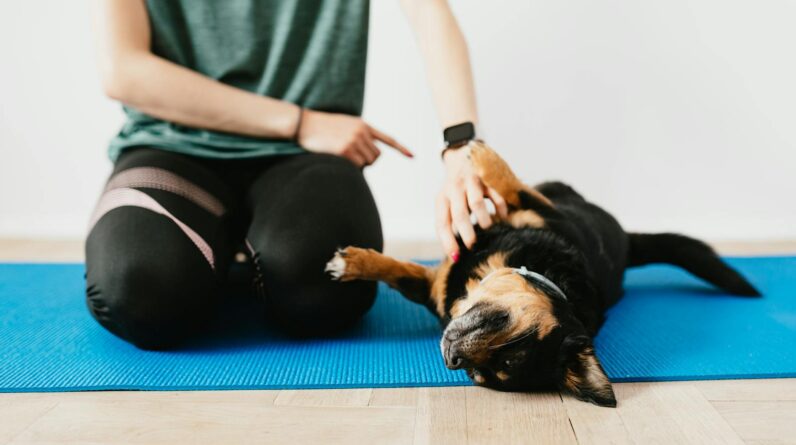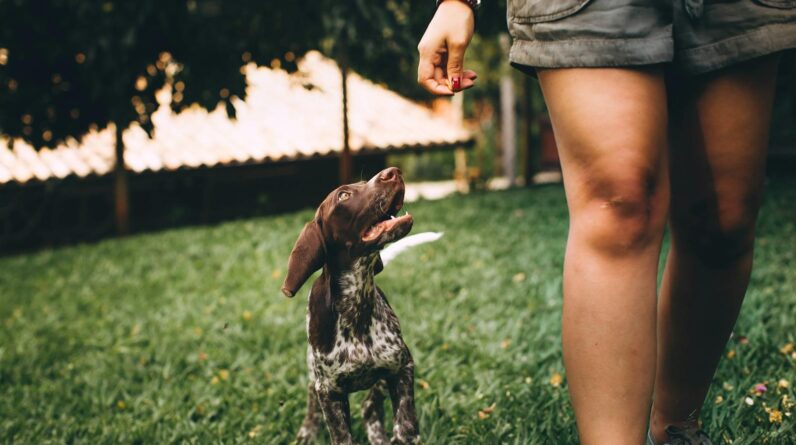
Let’s Chat About Fleas and Ticks on Dogs
Hey there, dog owners! You love your furry friend, right? Well, there’s something you’ve got to be on the lookout for: tiny little bugs called fleas and ticks. They’re not just gross; they can be bad news for your pup. So, let’s talk about what you need to know to keep your dog happy and healthy.
What Are Fleas and Ticks Anyway?
Fleas are super small insects that jump like tiny ninjas from place to place. They love to live in your dog’s fur because it’s warm and cozy. Once they settle in, they start to bite and eat blood from your dog. Not nice, right?
Then, there are ticks. Ticks wait on grass and leaves until your dog walks by. They grab onto your dog and, like vampires, they suck blood. Ugh! Ticks can be bigger than fleas, and sometimes you can see them stuck on your dog’s skin.
Why Should You Worry About Fleas?
First off, fleas make your dog itchy. Imagine having bug bites all over you – it would drive you crazy, right? It’s the same for dogs. Also, some dogs are allergic to flea bites which is even worse for them.
But it’s not just the itch. Fleas can also make dogs sick. They can give dogs worms (yep, those wriggly things) that live inside your pet. And if a dog has a lot of fleas, it can lead to being very tired and weak because of all the blood the fleas are eating.
And Ticks? Are They Bad Too?
Ticks can cause even more trouble. When they bite, they can pass on diseases to your dog. One is called Lyme disease, and it can make your dog feel super tired, have a fever, and hurt all over. It’s important to make sure ticks don’t stay on your dog for long, or they could make them very sick.
How to Spot Fleas and Ticks on Your Dog
So, how do you find these uninvited guests? With fleas, look for tiny black specks that move in your dog’s fur. These specks are the fleas. You might also see “flea dirt,” which kind of looks like pepper. It’s actually flea poop (yeah, eww), and it shows fleas are around.
Finding ticks can be a bit different. You often feel them before you see them. Run your hands all over your dog and feel for tiny bumps. Look closely; if you see a tick, it might be time to call the vet for help getting it off.
How to Keep Fleas and Ticks Away
Okay, so how do you keep these pests off your best buddy? There are a lot of ways:
- Spot-on Treatments: This is medicine you put on your dog’s back once a month. It’s like a magic shield that keeps bugs off.
- Chewable Tablets: Some are treats that your dog can eat every month. They make your dog’s blood taste yucky to fleas and ticks.
- Shampoos: Bathing your dog with special bug-fighting shampoo can wash the fleas and ticks right down the drain.
- Collars: Yep, they make special collars that have medicine to keep fleas and ticks away.
- Keep it Clean: Clean your house and yard often. Fleas and ticks like messy places where they can hide.
It’s best to talk to a vet before you try any treatments to make sure they are safe for your dog.
Dealing with Fleas and Ticks If They Show Up
Sometimes, even with hard work, fleas or ticks might find their way onto your dog. Don’t worry! Here’s what to do:
- If you see fleas, start with a flea comb to get them out. Then, give your dog a nice bath with flea shampoo.
- For ticks, it’s a bit trickier. If you’re brave, you can try to take the tick off with special tick tweezers. But if you’re not sure, let the vet handle it. They know best.
- After, double-check with your vet to see if your dog needs any medicine.
After dealing with these bugs, keep doing the treatments to stop them from coming back.
Last Bits of Advice
Remember, it’s easier to stop fleas and ticks before they start. Keep your buddy’s treatments up to date, and check them after walks or playtime outside. By keeping an eye out, you can save your dog from itchiness and sickness and keep them as your happy, playful pal.
Why is it important to protect my dog from fleas and ticks?
Protecting your dog from fleas and ticks is vital for their health. Fleas can cause serious scratching, allergies, and even tapeworms. Ticks are even worse; they can transmit diseases like Lyme, which can lead to long-term health issues for your furry pal.
Regular preventative treatments can save your dog from discomfort and prevent the spread of these pests into your home. It’s much easier to prevent an infestation than to treat one after the fact. So, keep your dog safe and both you and your pooch happy.
How can I spot a flea or tick infestation on my dog?
Trust me, if your dog starts itching more than they’re wagging their tail, it’s time to check for fleas. Look for tiny black specks in their fur, also known as flea dirt. With ticks, it’s a bit trickier—check for small bumps on the skin. Ticks like to hide in cozy spots like under the ears or around the neck.
If you spot any of these signs, it’s probably time to talk to your vet. Early detection means a quicker fix, so keep your eyes peeled and give your dog regular check-ups, especially after walks in the park or the woods.
What’s the best way to remove a tick from my dog?
Removing a tick is like defusing a tiny bomb; it’s all about precision. Use a pair of fine-tipped tweezers, grab the tick close to the skin, and pull straight up with steady pressure. Don’t twist or jerk—the tick’s mouthparts might stay behind and cause an infection.
After the tick is out, clean the bite area and your hands with soap and water or rubbing alcohol. Don’t crush the tick with your fingers. Instead, drown it in alcohol, place it in a sealed bag/container, wrap it tightly in tape, or flush it down the toilet. Then give your dog a treat; they’ve earned it!
How often should I treat my dog for fleas and ticks?
You might not think of fleas and ticks all year round, but they do. It’s best to treat your dog monthly, especially in warmer months when these critters are out in force. Some products offer longer protection, but make sure to stick to the schedule recommended by your vet or the product label.
Even in cooler months, don’t let your guard down. Fleas can cosy up indoors, and ticks can still be active on milder winter days. So, stay consistent with treatments, because those little pests certainly aren’t taking any breaks.
Are natural remedies effective against fleas and ticks?
Everyone loves a good natural remedy; they’re like life hacks for dog care. Some folks swear by things like lemon juice or essential oils to deter fleas and ticks. While they might have some effect, they’re generally not as reliable as the treatments backed by science and your vet’s stamp of approval.
If you’re considering a natural route, chat with your vet first. They can help steer you toward safe and effective options. Remember, what’s natural isn’t always harmless—especially when it comes to your pup’s health.
Key Takeaways
- Fleas and ticks are more than just a nuisance; they can pose health risks to your dog, including diseases like Lyme disease and Rocky Mountain spotted fever.
- These pesky critters can hop onto your dog during walks or in your backyard, so it’s super important to check your pooch regularly.
- Preventative treatments are a dog’s best friend. Options like spot-on treatments, oral medications, and collars work wonders to keep fleas and ticks at bay.
- Don’t forget about your home and yard; keeping these areas treated can cut down the chances of infestation big time.
- Spot an unwelcome parasite? Fast action is key—remove ticks as soon as you see them and give your vet a ring if you’re worried about flea infestations.
- Grooming isn’t just for good looks – regular baths and combing can help you spot and tackle fleas and ticks early on.
- Natural remedies like certain essential oils can be helpful, but they’re not always a surefire solution, so chat with your vet before diving into these.
- If your furry buddy does end up with a flea or tick problem, it’s not the end of the world. Modern treatments are super effective, so they’ll be back to their happy, healthy selves in no time.
Final Thoughts
Hey, dog parents, remember fleas and ticks are more than just itchy pests; they’re health hazards. These little buggers can transmit diseases, so prevention is key. Monthly treatments, keeping your yard tidy, and regular checks all help keep your furry buddy safe. And don’t forget, immediate action at the first sign of an infestation is crucial. Get to it—your pup’s counting on you!
If you ever spot these critters on your pooch, reach for that flea comb and vet-approved meds, stat! Your home needs attention too; clean everything from bedding to carpets. Lastly, know when to call in the pros; sometimes a flea problem is too tough to handle solo. Got it? Great! Now, go enjoy some itch-free, tail-wagging adventures with your four-legged friend.







